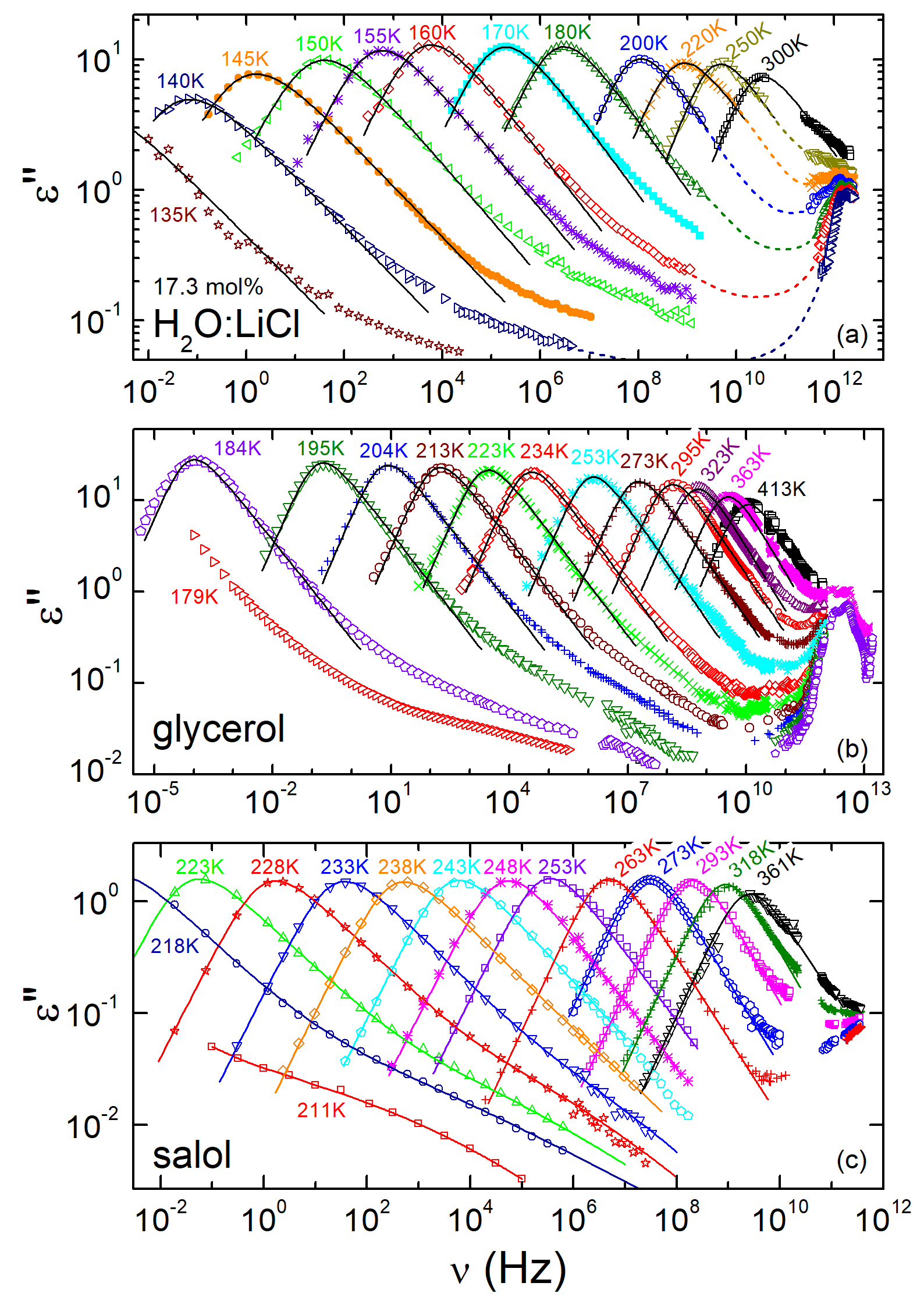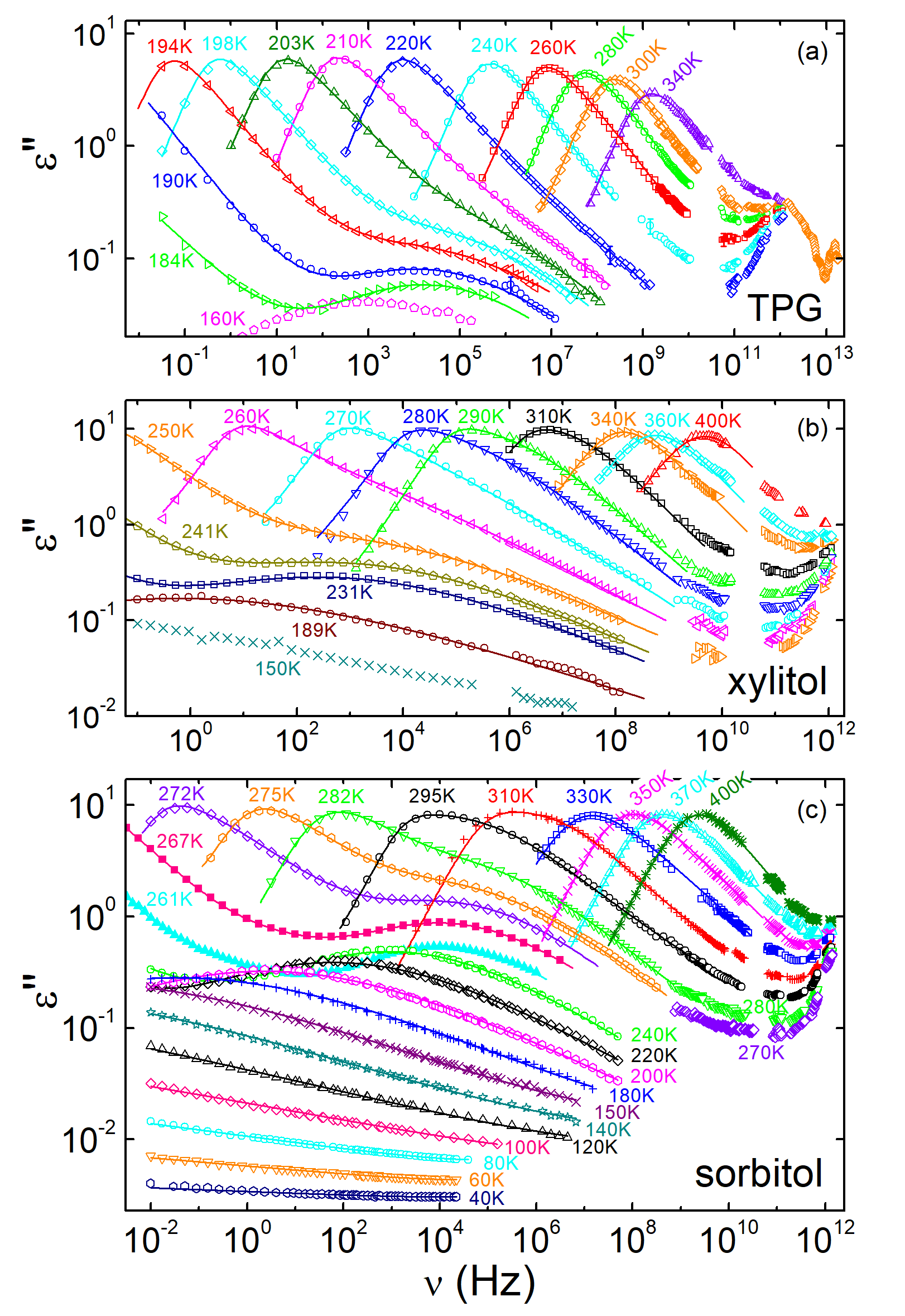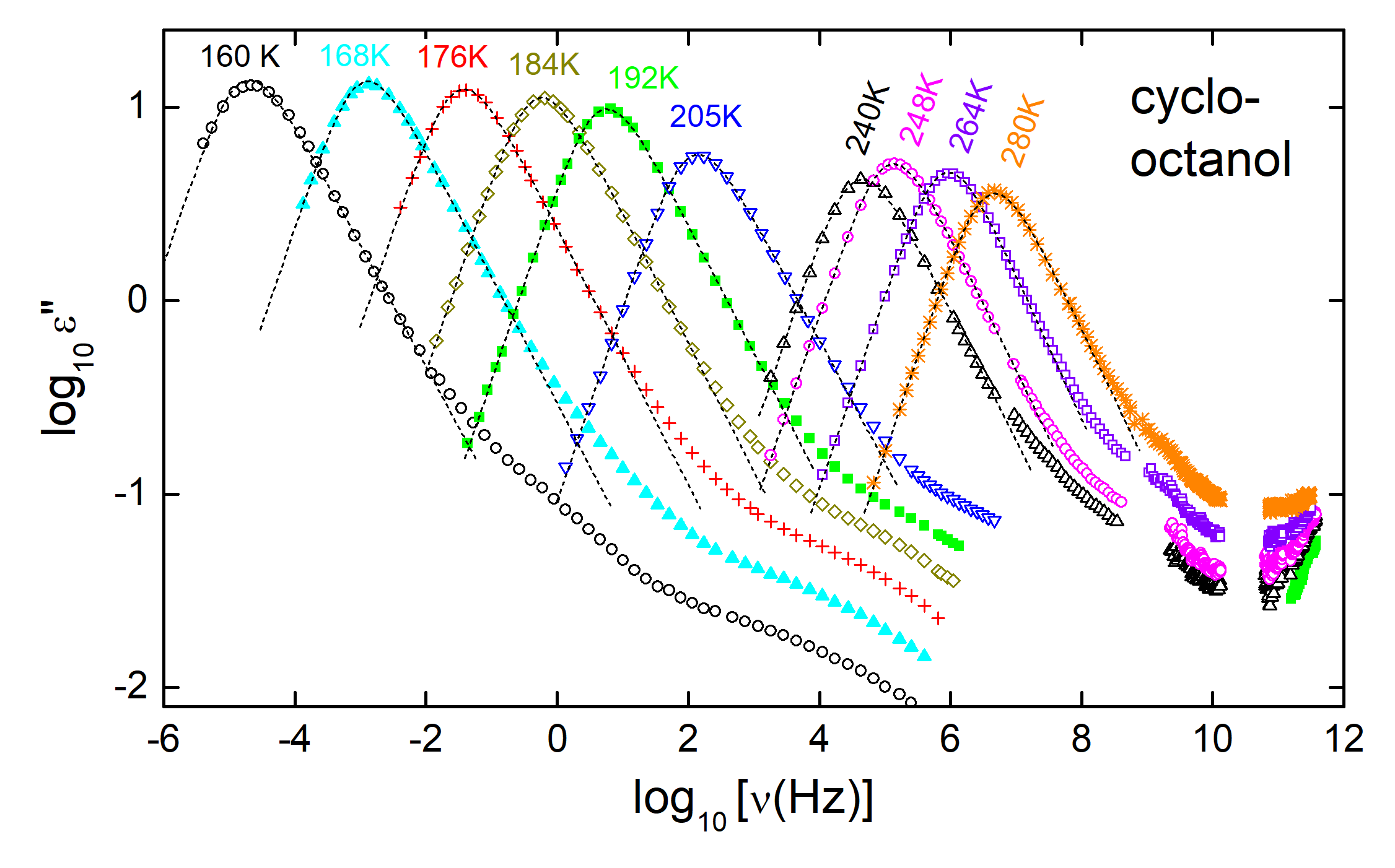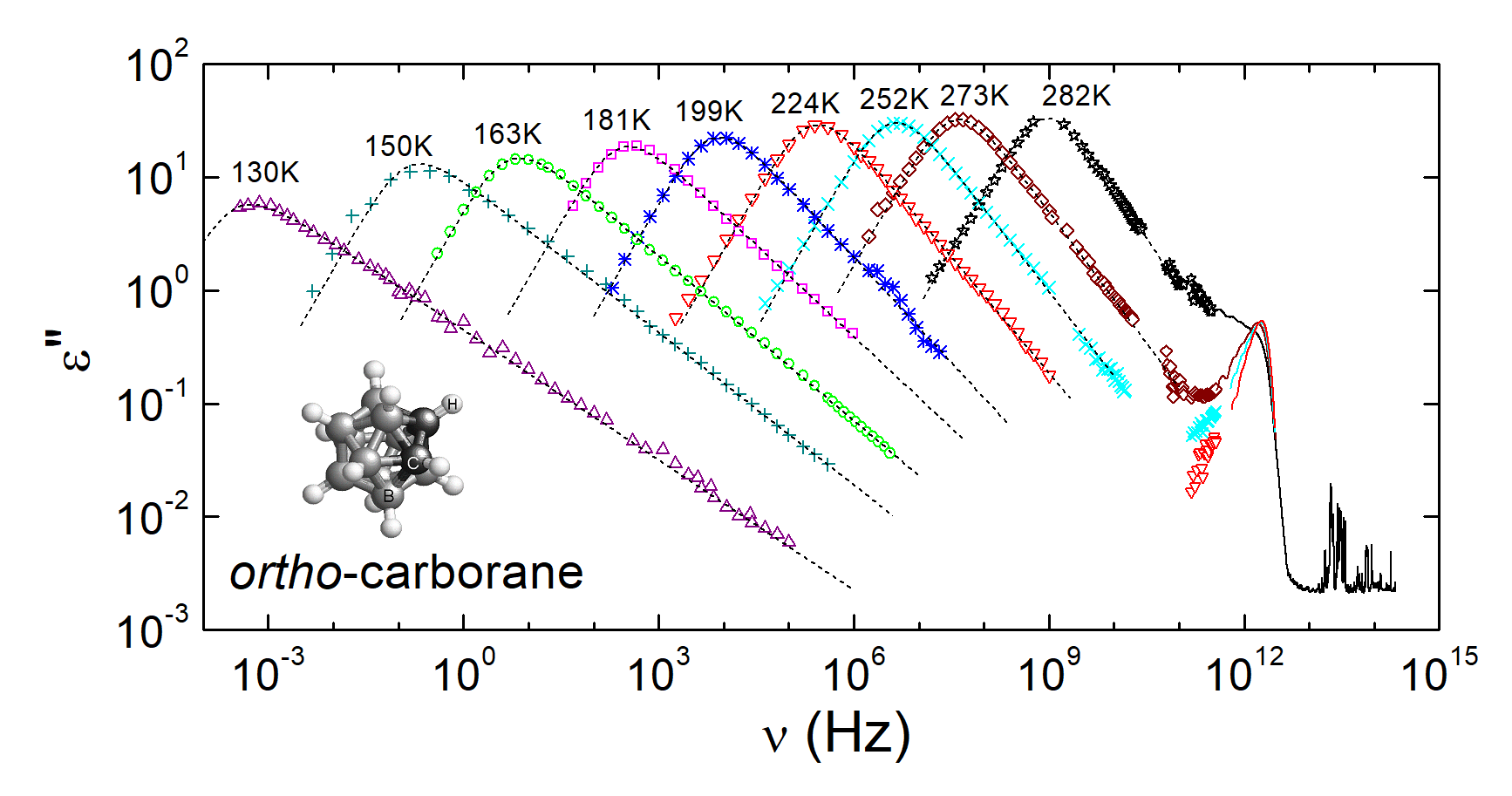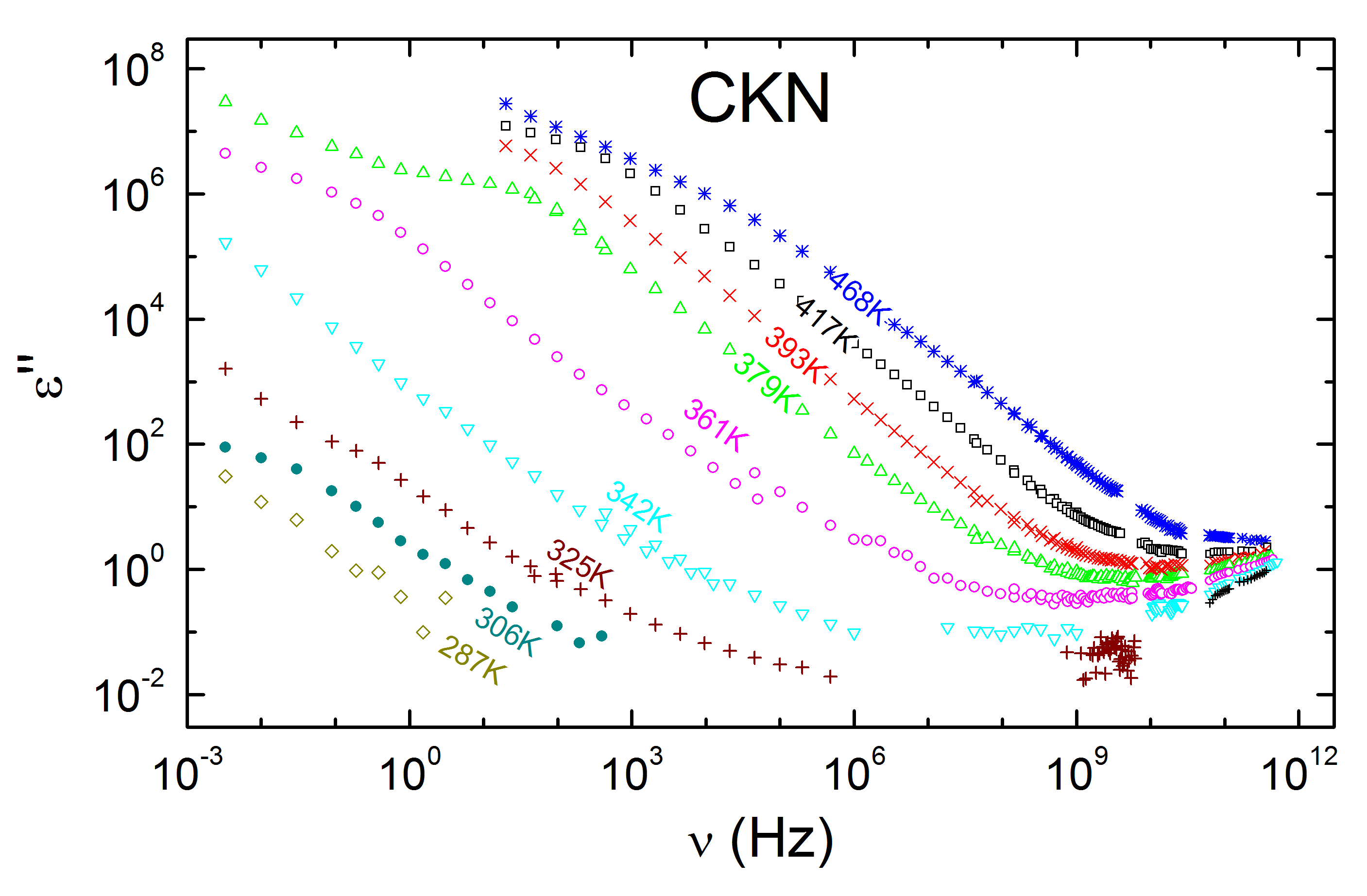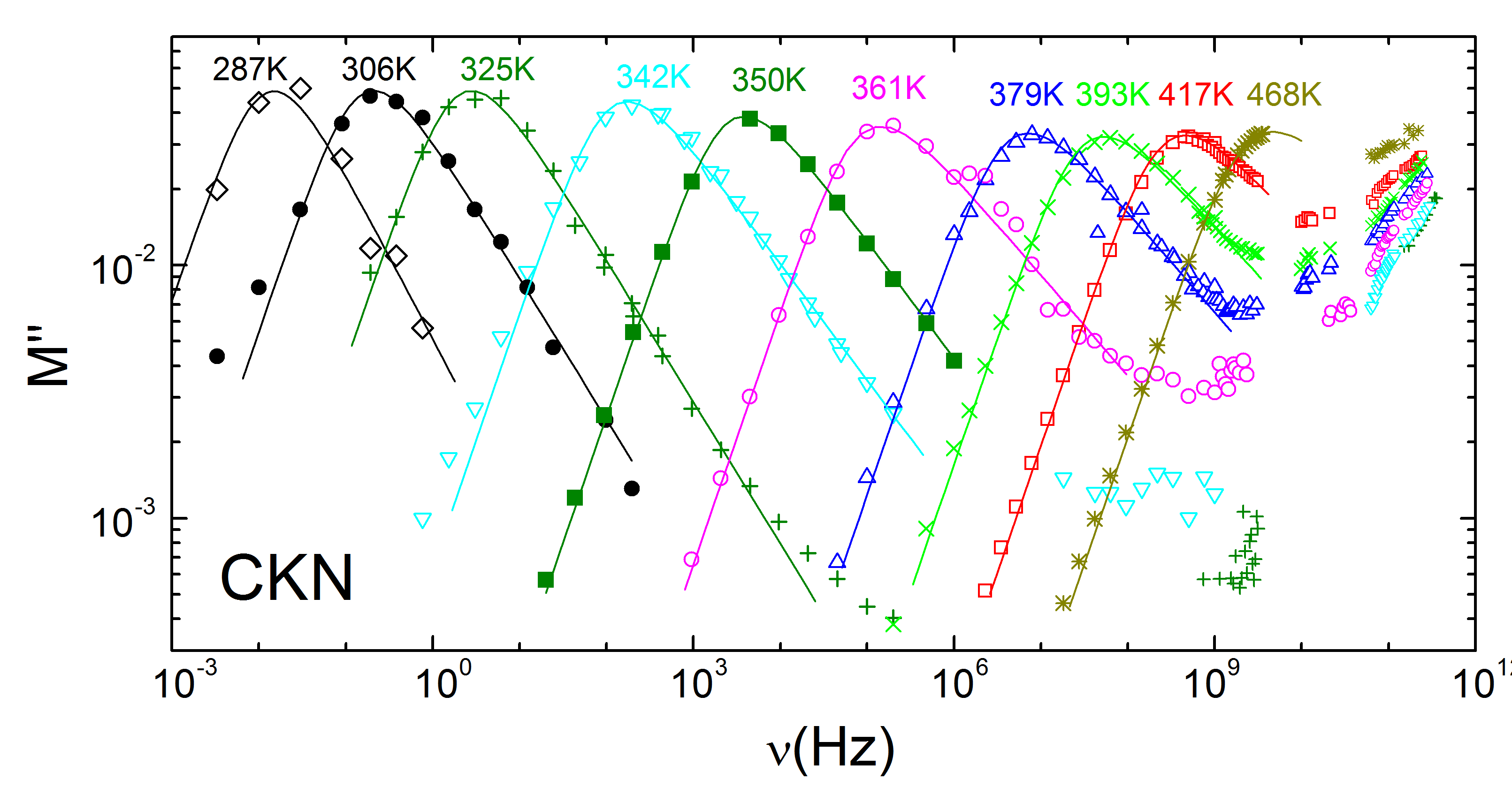| [1] |
Ionic conductivity in Li2O-Al2O3-SiO2 based glasses and glass ceramics
P. Lunkenheimer, G. Gerhard, F. Drexler, R. Böhmer, A. Loidl, and W. Pannhorst,
Z. Naturforsch. 50a, 1151 (1995).
|
| [2] |
Molecular reorientation in ortho-carborane studied by dielectric spectroscopy
P. Lunkenheimer and A. Loidl,
J. Chem. Phys. 104, 4324 (1996).
[PDF]
|
| [3] |
Ion transport in the fragile glass-former 3KNO3-2Ca(NO3)2
A. Pimenov, P. Lunkenheimer, H. Rall, R. Kohlhaas, A. Loidl, and R. Böhmer,
Phys. Rev. B 54, 676 (1996).
[PDF]
|
| [4] |
Relaxations and fast dynamics of the plastic crystal cyclo-octanol investigated by broadband dielectric
spectroscopy
R. Brand, P. Lunkenheimer, and A. Loidl,
Phys. Rev. B 56, R5713 (1997).
[PDF]
|
| [5] |
Dielectric and far-infrared spectroscopy of glycerol
U. Schneider, P. Lunkenheimer, R. Brand, and A. Loidl,
J. Non-Cryst. Solids 235-237, 173 (1998).
|
| [6] |
Broadband dielectric spectroscopy on glass-forming propylene carbonate
U. Schneider, P. Lunkenheimer, R. Brand, and A. Loidl,
Phys. Rev. E 59, 6924 (1999).
[PDF]
|
| [7] |
Glassy dynamics
P. Lunkenheimer, U. Schneider, R. Brand, and A. Loidl,
Contemp. Phys. 41, 15 (2000).
|
| [8] |
Magnetic, electronic, dielectric and optical properties of Pr(Ca:Sr)MnO3
J. Sichelschmidt et al.,
Eur. Phys. J. B 20, 7 (2001).
|
| [9] |
Dielectric spectroscopy of glass-forming materials: α-relaxation and
excess wing
P. Lunkenheimer and A. Loidl,
Chem. Phys. 284, 205 (2002).
|
| [10] |
Glassy dynamics beyond the α-relaxation
P. Lunkenheimer and A. Loidl,
in: Broadband Dielectric Spectroscopy,
eds. F. Kremer and A. Schönhals (Springer, Berlin, 2003), p. 131.
|
| [11] |
Response of disordered matter to electromagnetic fields
P. Lunkenheimer and A. Loidl,
Phys. Rev. Lett. 91, 207601 (2003).
[PDF]
|
| [12] |
Broadband dielectric spectroscopy on benzophenone: α relaxation, β relaxation,
and mode coupling theory
P. Lunkenheimer, L.C. Pardo, M. Köhler, and A. Loidl,
Phys. Rev. E
77, 031506 (2008).
[PDF]
|
| [13] |
Broadband dielectric response of CaCu3Ti4O12: From dc to the electronic transition regime
Ch. Kant, T. Rudolf, F. Mayr, S. Krohns, P. Lunkenheimer, S.G. Ebbinghaus, and A. Loidl,
Phys. Rev. B 77, 045131 (2008).
[PDF]
|
| [14] |
Glassy dynamics in mono-, di-, and tri-propylene glycol: From the α- to the fast β
relaxation
M. Köhler, P. Lunkenheimer, Y. Goncharov, R. Wehn, and A. Loidl,
J. Non-Cryst. Solids 356, 529 (2010).
|
| [15] |
High-frequency dynamics of type B glass formers investigated by broadband dielectric spectroscopy
S. Kastner, M. Köhler, Y. Goncharov, P. Lunkenheimer, and A. Loidl,
J. Non-Cryst. Solids 357, 510 (2011).
|
| [16] |
Hydrogen-bond equilibria and lifetimes in a monohydroxy alcohol
C. Gainaru, S. Kastner, F. Mayr, P. Lunkenheimer, S. Schildmann, H.J. Weber, W. Hiller, A. Loidl, and R. Böhmer,
Phys. Rev. Lett.
107, 118304 (2011).
[PDF]
|
| [17] |
Broadband dielectric spectroscopy on human blood
M. Wolf, R. Gulich, P. Lunkenheimer, and A. Loidl,
Biochim. Biophys. Acta. 1810, 727 (2011).
|
| [18] |
Dielectric spectroscopy of glassy dynamics
P. Lunkenheimer, M. Köhler, S. Kastner, and A. Loidl,
in:
Structural Glasses and Supercooled Liquids: Theory, Experiment, and Applications,
eds. P.G. Wolynes and V. Lubchenko (Wiley, Hoboken, 2012), p. 115.
|
| [19] |
Ions in glass-forming glycerol: Close correlation of primary and fast β relaxation
M. Köhler, P. Lunkenheimer, Y. Goncharov, and A. Loidl,
Phys. Rev. E 87, 062320 (2013).
[PDF]
|
| [20] |
Liquid 1-propanol studied by neutron scattering, near-infrared, and dielectric spectroscopy
P. Sillren et al.,
J. Chem. Phys. 140, 124501 (2014).
[PDF]
|
| [21] |
Electromagnetic-radiation absorption by water
P. Lunkenheimer, S. Emmert, R. Gulich, M. Köhler, M. Wolf, M. Schwab, and A. Loidl,
Phys. Rev. E
96, 062607 (2017).
[PDF]
|
| [22] |
Primary α and secondary β relaxation dynamics of meta-toluidine in the liquid state
investigated by broadband dielectric spectroscopy
H. Svajdlenkova, A. Ruff, P. Lunkenheimer, A. Loidl, and J. Bartos,
J. Chem. Phys. 147, 084506 (2017).
[PDF]
|
| [23] |
Fast dynamics in glass-forming salol investigated by dielectric spectroscopy
P. Lunkenheimer, R. Wehn, M. Köhler, and A. Loidl,
J. Non-Cryst. Solids 492, 63 (2018).
|
| [24] |
Glassy dynamics: From millihertz to terahertz
P. Lunkenheimer and A. Loidl,
in:
The scaling of relaxation processes, eds. F. Kremer and A. Loidl (Springer, Cham, 2018), p. 23.
|
| [25] |
Johari-Goldstein relaxation far below Tg: Experimental evidence for the Gardner
transition in structural glasses?
K. Geirhos, P. Lunkenheimer, and A. Loidl,
Phys. Rev. Lett. 120, 085705 (2018).
[PDF]
|
| [26] |
Relaxation dynamics of poly(ethylene oxide)
P. Lunkenheimer and A. Loidl,
Macromolecules 58, 3547 (2025).
|

